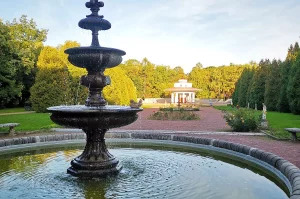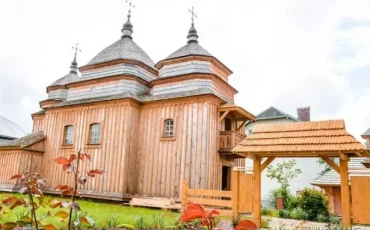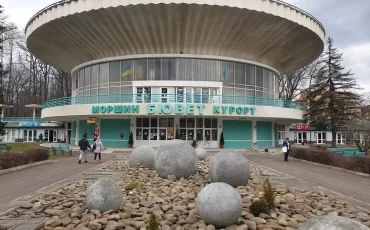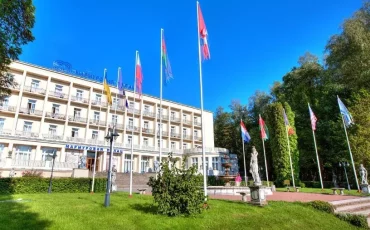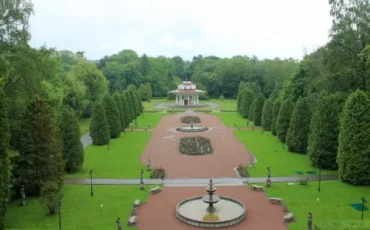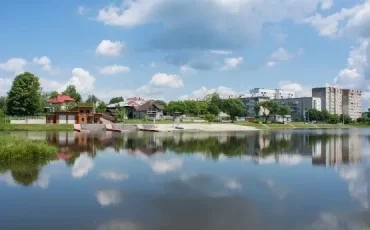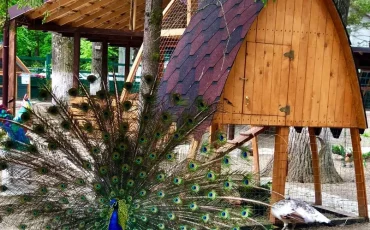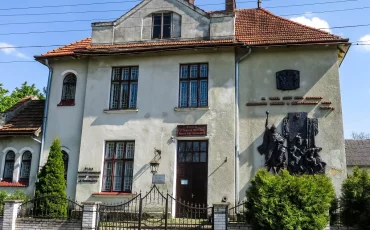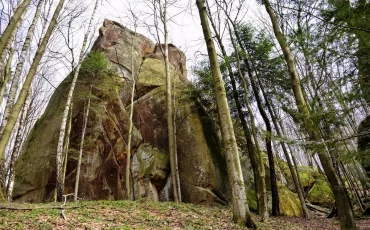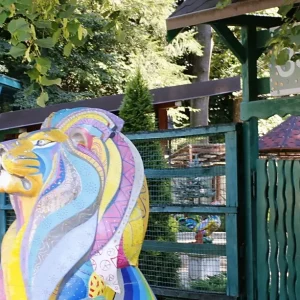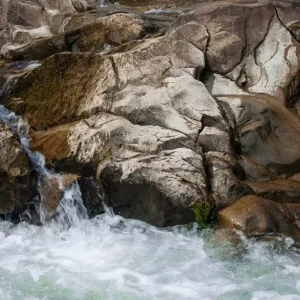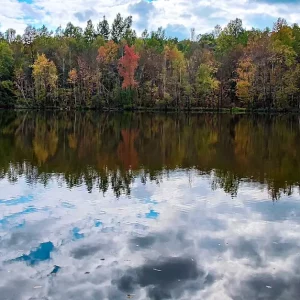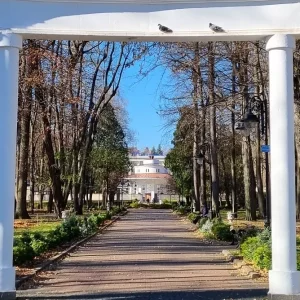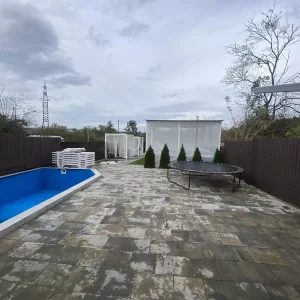According to legend, the town of Morshyn was founded in the early 14th century by two brothers, Mor and Shin, who came down from the high mountains and went to the valley to seek their fortune. They chose a beautiful place with picturesque nature for their new settlement.
The first written mention of Morshyn dates back to 2 January 1482. At that time, the small village of Morshyn with 12 yards was part of the Kingdom of Poland and belonged to the nobleman Yurii (Yukhna) Nagvazdan.
For a long period of time, Morshyn was a place of natural salt extraction. The salt mines of Morshyn were owned by the Counts Branicki (Branicki), who were lucky enough to receive royal permission to build salt mines. Salt brine was extracted from 5 mine wells in Morshyn. The salt itself was produced by boiling the brine. However, the Branicki business plan failed in the early eighteenth century. The reason was that Morshyn salt had a specific bitter taste, which made it uncompetitive. The bitter taste of Morshyn salt is due to the presence of mirabilite, a glauber salt, which is nowadays used in veterinary medicine as a laxative, choleretic, detoxifying agent and antidote for heavy metal poisoning.
A new stage in the history of Morshyn began in 1875-1876. The fact is that in 1875 the Stryi – Stanislav (now Ivano-Frankivsk) railway was laid through Morshyn, making it more accessible to tourists and holidaymakers. Almost immediately after that, in 1876, the village was purchased by a German merchant Boniface Stiller for 39,000 zlotys. He decided to turn this picturesque corner of the Carpathians into a famous European resort. To this end, Stiller invited his friends, doctors W. Piasecki and S. Dzikowski, to Morshyn and launched an active advertising campaign. In 1877, on the initiative of Boniface, many newspapers in Austria-Hungary began to publish reports about the opening of a climatic resort in Morshyn to treat patients with pulmonary tuberculosis. In 1878, the “Institution for the Treatment of Chest Diseases” began to receive patients in Morshyn, which was the beginning of its spa history. Morshyn was an extremely good place to treat respiratory diseases due to the local nature and clean air.
At the same time, during his inspection of Morshyn, Dr Liutostansky noticed three Morshyn springs with bitter-salty water. Active scientific study of local mineral waters began. In 1881, the results of research on the chemical composition of Morshyn brine were published by Professor W. Radziszewski of Lviv University.
At the same time, the process of arranging the existing and searching for new sources of Morshyn mineral water began. Thus, in 1879, as a result of painstaking work to clean and arrange two mine wells, they were turned into full-fledged mineral water springs, which were named after the owner of the resort and his wife – “Boniface” and “Magdalena” (nowadays – springs No. 1 and No. 6). In the same year, the Mother of God spring (now spring No. 4) with healing ultra-fresh water was discovered. At the same time, healing peat mud – “borovyna” – was discovered on the outskirts of Morshyn.
Thus, starting in 1880, Morshyn began to actively use local mineral water and peat mud for treatment. This made Morshyn not only a climatic but also a balneological resort. The local peat mud was actively used for mud baths and applications, while the healing waters were initially used only for therapeutic baths. In 1880-1881, the first attempts of internal use of healing waters from the Boniface spring began. And in 1883, this water became so popular that it was mass-produced and sold in bottles. Even then, it began to be actively sold in the USA, England, Italy, Romania and other countries. Morshyn mineral water was successfully used to treat the digestive system. It helped to get rid of diseases of the stomach, liver, pancreas, intestines and urinary system.
Morshyn quickly became a popular European resort. On the eve of the First World War, Morshyn was even called the “Galician Spa” and “Galician Carlsbad” (now Karlovy Vary).
After the tumultuous events of the First World War and the defeat of the Ukrainian liberation struggle, Morshyn became part of interwar Poland. At this time, during the 1920s and 1930s, the infrastructure of the Morshyn resort continued to be actively developed. It was in the 1930s that a hydrotherapy centre, mud baths, inhalation and mineral water pump room – the so-called “fungus”, which is a kind of symbol of the town and the majestic “Resort House”, which now houses the Marble Palace sanatorium, were built in Morshyn.
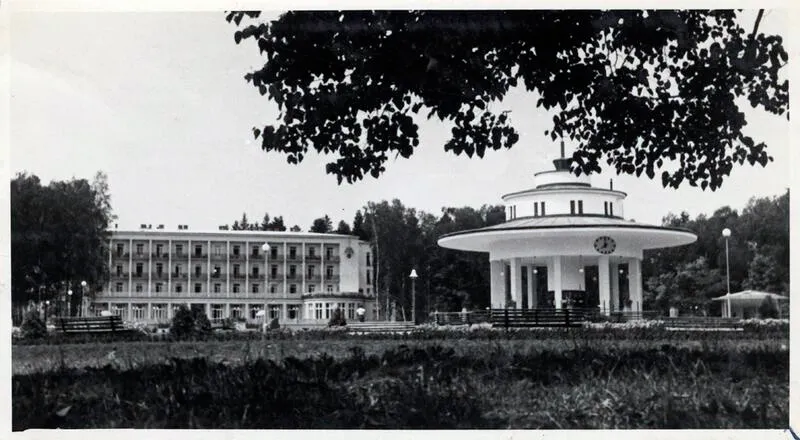
In the interwar period of Polish history, holidays in Morshyn were a combination of modern green tourism and wellness treatments. Given the fact that quality medical services were not readily available in those days, a visit to the Morshyn resort was an essential way to effectively treat and improve health. The Polish elite, represented by ministers, ambassadors, dignitaries and famous artists, often came to Morshyn for a rest.
After the Second World War, Morshyn became part of the Ukrainian SSR. In Soviet times, private boarding houses were nationalised and turned into sanatoriums, and in 1960 the entire resort was transferred to the balance of trade unions. Morshyn continued to grow and develop. Already in 1948, it was granted the status of an urban-type settlement.
In the early 1950s, there were nine sanatoriums in Morshyn. During the Soviet period of history, a large number of tourist and recreational infrastructure facilities were built in the town, including the Morshyn resort clinic, an 800-seat canteen, a post office, a cinema and a House of Culture, as well as the Prolisok and Lavanda sanatoriums. In Soviet times, Morshyn became a resort of all-Union significance. Every year, tens of thousands of people came here to improve their health.
After Ukraine regained its independence in 1991, Morshyn continued to develop rapidly. In 2002, it received the status of a city.
Nowadays, in all respects, except for prices, Morshyn is in no way inferior to modern European balneological resorts.
